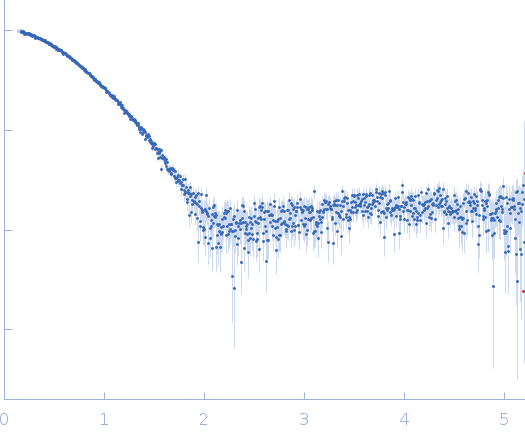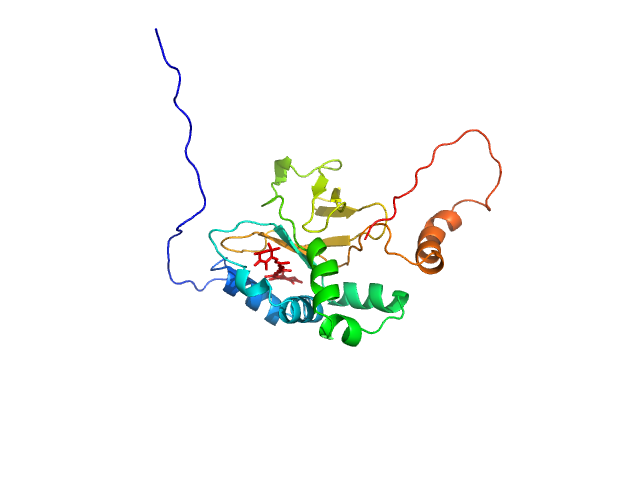|
Synchrotron SAXS data from solutions of AstaPo1 complexed with canthaxanthin in 20 mM Tris-HCl, 150 mM NaCl, pH 7.6 were collected on the BM29 beam line at the ESRF (Grenoble, France) using a Pilatus3 2M detector at a wavelength of λ = 0.1 nm (I(s) vs s, where s = 4πsinθ/λ, and 2θ is the scattering angle). One solute concentration of 2.57 mg/ml was measured at 20°C. The data were normalized to the intensity of the transmitted beam and radially averaged; the scattering of the solvent-blank was subtracted.
Canthaxanthin: https://pubchem.ncbi.nlm.nih.gov/compound/Canthaxanthin
|
|
 s, nm-1
s, nm-1
